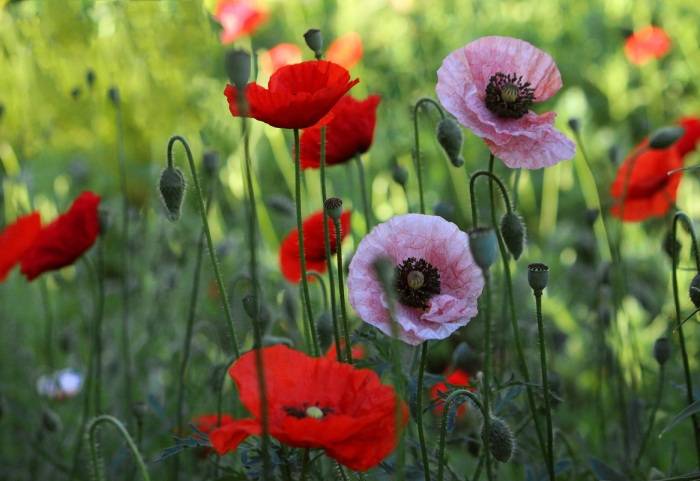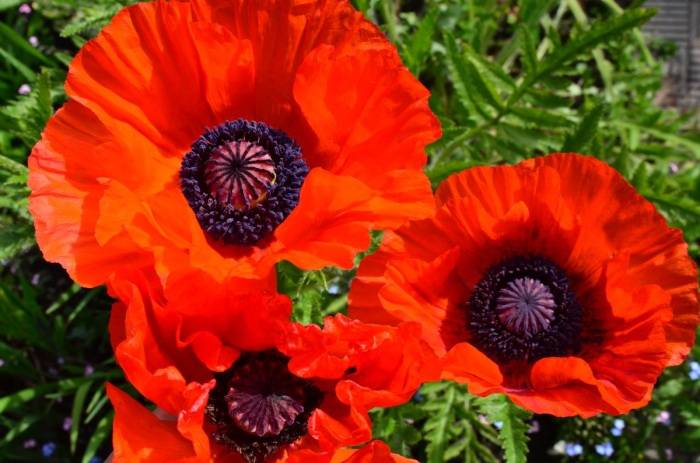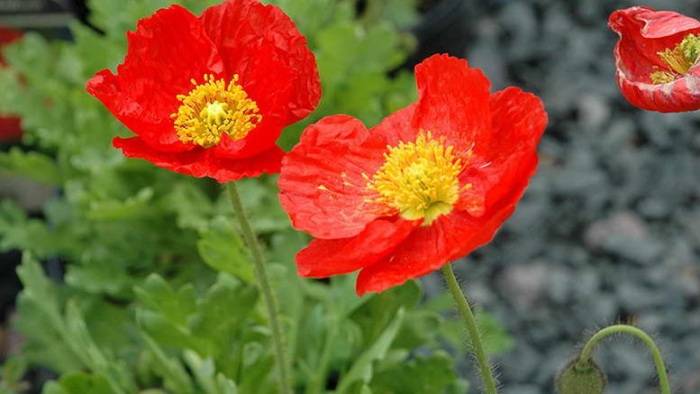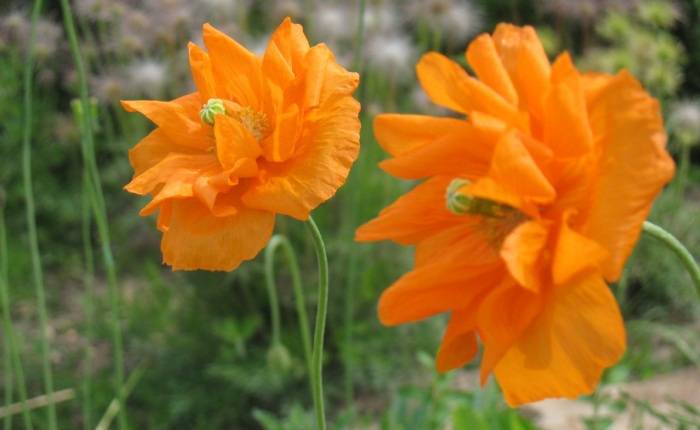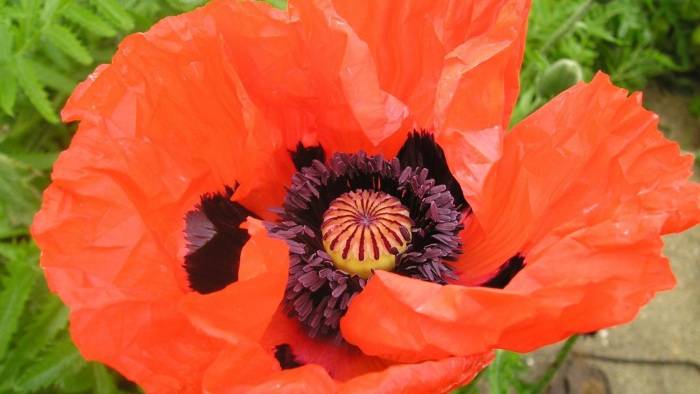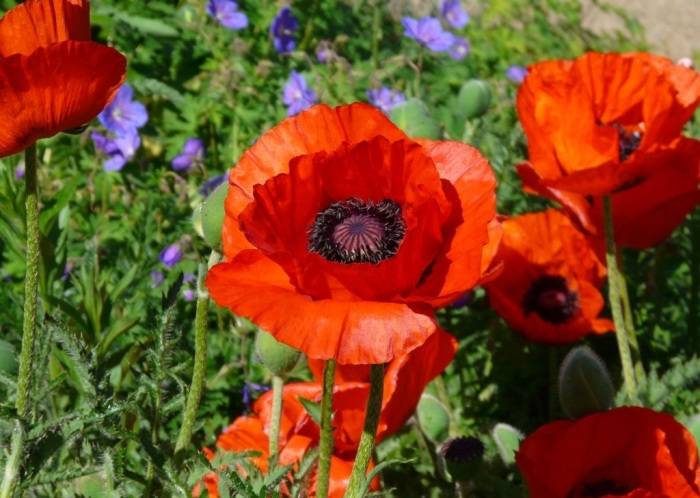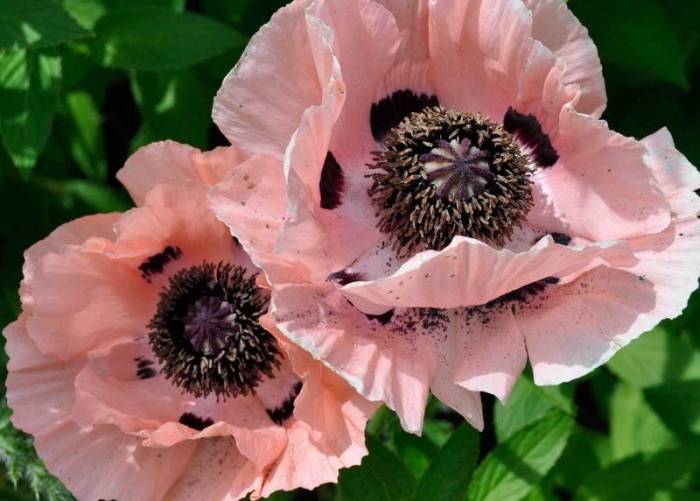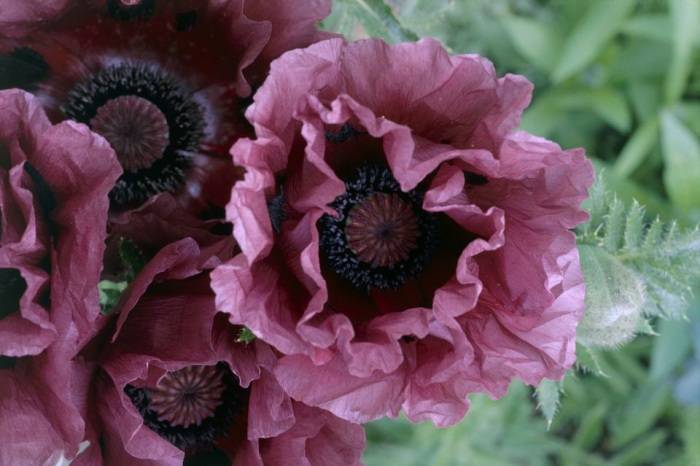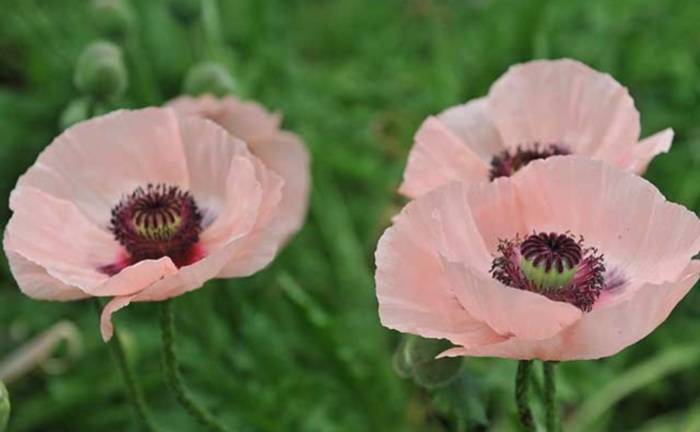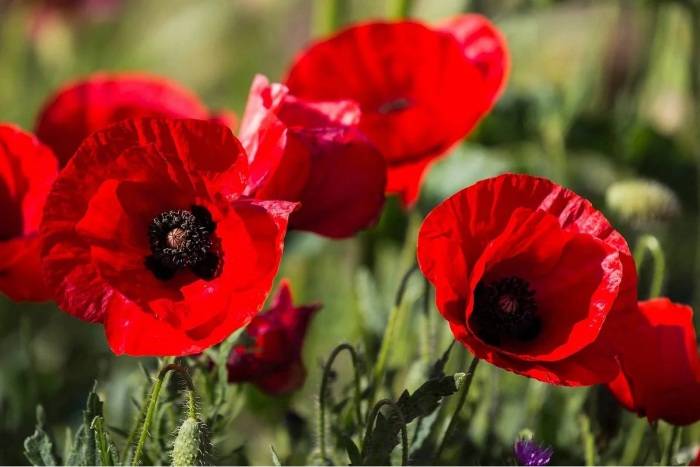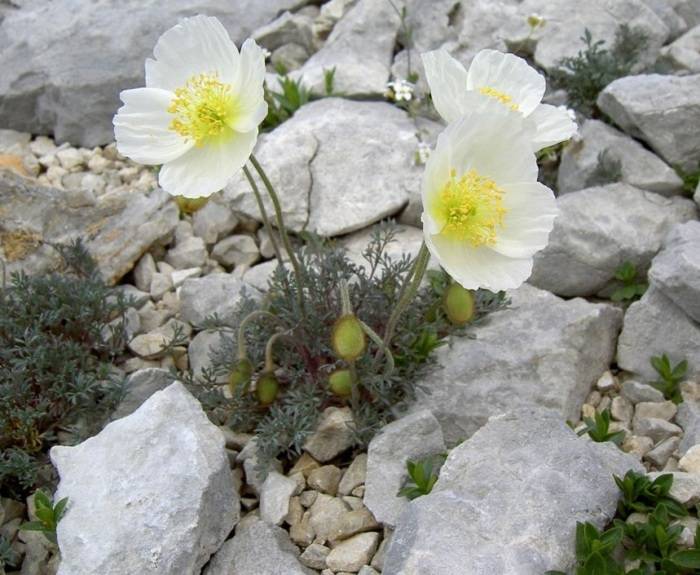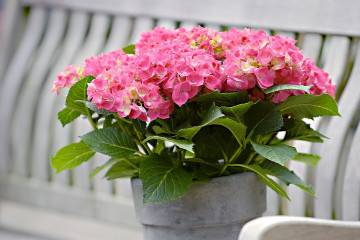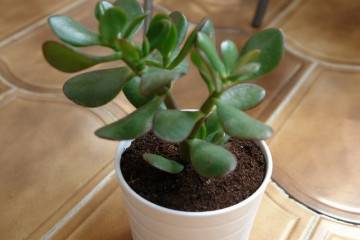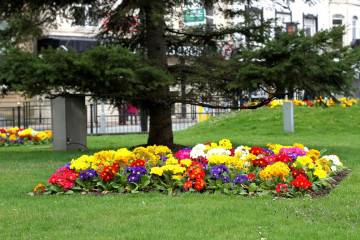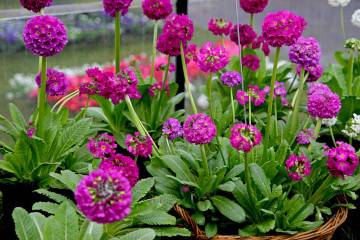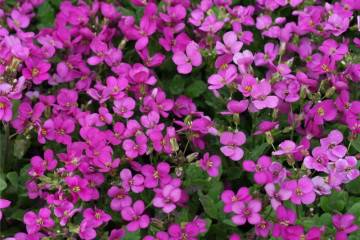Everything about poppy: what it looks like, can it be grown in the country
Content:
- What family does it belong to
- Classification of popular perennial poppy species
- Perennial poppy varieties that are most popular with gardeners - red varieties
- Pink and purple varieties
- White and yellow papavers
- Popular types of annual poppies
- How perennial poppies breed
- Features of care in the garden
- When and how it blooms
- Possible growing problems
- Use in landscape design
Poppy is a real garden decoration, it has many shades of red, pink, orange, yellow and white. There are even blue and black poppies. But there are several nuances in caring for this plant, without taking into account which, the gardener will not be able to enjoy the beautiful flowering.
What family does it belong to
Poppy belongs to the poppy family of the same name - Papaveraceae. Papavers (from Lat. Papaver - poppy) are the closest relatives of buttercups. The poppy family unites both annual and perennial plants. Among the most famous representatives of the Makovs are the Corydalis, Celandine, Escholzia. There are about 700 species in total.
Briefly about the history of appearance
According to scientists, poppy is a plant known to mankind even in the Neolithic period (X-III millennium BC). Poppy seeds are found in the excavations of the sites of ancient people and in the Egyptian pyramids.
There are many legends about the poppy and its origin. According to ancient Roman mythology, poppies grew where the tears of the goddess Venus, who lost her lover, the beautiful Adonis, fell to the ground. Not only among the Greeks, but also among other peoples, poppies are flowers of love and passion.
According to Greek myth, these flowers were created to comfort the goddess Demeter, who had lost her daughter. Having collected an armful of scarlet flowers, the inconsolable mother plunged into oblivion.
Plant characteristics
In nature, poppies are common in the temperate and subtropical climatic zone. Their favorite places of growth are rocky slopes of mountains, steppes and semi-deserts. In Russia, it is found in the Rostov Region and Krasnodar Territory, in the Caucasus, Stavropol, Altai, as well as in Central Asia and Eastern Siberia. Most often, you can find the holosteel and oriental varieties, as well as the samoseyka.
So, what a poppy looks like. The flowers of this plant are single, large and bright, on long peduncles and with numerous stamens. The leaf is always pinnately dissected, pubescent or smooth, depending on the subspecies. Poppy fruits are in the form of dense capsules with small seeds. These flowers are pollinated by bees, but some species have switched to self-pollination. Light seeds with a sharp burst of the capsule scatter in all directions and are carried further by the wind.
Benefit and harm
Poppy seeds have many useful properties:
- They contain calcium, zinc, copper, phosphorus, sulfur, iron, magnesium and manganese so valuable for the human body.
- Help for insomnia and depression (especially when combined with honey).
- They have a beneficial effect on the gastrointestinal tract. They are especially effective against diarrhea.
- Relieve coughing attacks.
- Slows down the development of cancer cells.
Poppy tea easily relieves headaches and toothaches, but is quickly addictive. And in general, experts do not recommend self-medication, even folk remedies should be taken after consultation and under the supervision of a doctor.
The main harm of papaver is that a potent drug, opium, is obtained from his milky juice.
Classification of popular perennial poppy species
Among the most common poppies that can grow for more than one year, there are 4 main varieties:
- eastern (aka Turkish);
- Alpine;
- holosteel (saffron);
- rock breaking (Spanish).
Oriental or Turkish (Papaver orientale)
Oriental poppy is the most famous variety of this plant and the most decorative. Most garden varieties are bred on the basis of Turkish papaver. The homeland of this species is the mountainous terrain of Iran and Turkey. In the wild, it also occurs on the rocky slopes of the Caucasus Mountains.
The root system of this species is powerful enough to draw moisture in the dry period from the deep layers of the soil, and also firmly adhere to mountain slopes. The plant reaches a height of 100 cm.
The leaves are collected in a root rosette. The leaf blade itself, up to 30 cm long, is light green, with a rigid edge, pinnately dissected. The length of the leaf petiole is 4-6 cm. On the peduncle stems, smaller pinnately dissected leaves can be located.
The flowers are large, up to 20 cm in diameter, open cup-shaped. Petals from 4 to 6 pieces, they are round and whole. The stamens and anthers are purple or black. The petals themselves in the natural form are colored in different shades of red. There may be a dark spot at the base of the petal.
The dark gray seeds are collected in a brown or gray-green obovate capsule topped with a convex disc. Poppy seeds fully ripen in the 2nd decade of August.
Today, gardeners around the world are pleased with more than 200 ornamental varieties of Turkish poppy, including terry (peony).
Alpine (Papaver alpinum)
Small perennial, not exceeding 50 cm in height. The foliage is collected in a root rosette. The leaf plate is narrow, pinnately dissected, green with bluish tints.
Small, up to 5 cm in diameter, single five-petal flowers are located on straight pubescent peduncles. Alpine papaver petals can be of different colors: white, yellow, red or pink. Newer hybrid varieties have cream or orange petals. The stamens are bright yellow. The flowers have a pleasant aroma.
Holosteel poppy (Papaver nudicaule), or saffron poppy (Papaver croceum)
Another name is saffron poppy. In culture, it can grow as a biennial plant. In nature, it grows as a perennial on rocky slopes, in the steppes of distant Altai, Eastern Siberia, Mongolia, China and Kazakhstan. It is also found in Alaska and in the Arctic regions of the Yukon.
The plant is undersized, from 25 to 50 cm. Green foliage with a bluish tint is collected in a root rosette. The oblong leaf plate of the holosteel poppy is pinnately dissected, with a slight edge.
Five-petal flowers up to 6 cm in diameter are located on straight pubescent peduncles.The flowering period covers the first two months of the summer. The stamens are yellow. The petals in wild varieties are white, orange or yellow. In the bare-stemmed garden poppy, flowers can be peach or pink, reaching a size of 20 cm.
Rock-breaking (Papaver rupifragum), or Spanish, poppy (Spanish Poppy)
This plant grows in the mountains of the Caucasus and Asia Minor. Whole poppy fields are found in Spain. This biennial grows up to 45 cm in height.
Semi-double flowers appear in the 2nd year of life at the end of May. The diameter of the flowers is up to 2.5 cm. The color of the petals is orange-red. The leaves are pinnately dissected, silvery-green. The rosette is rooted. It blooms profusely throughout the summer.
Perennial poppy varieties that are most popular with gardeners - red varieties
Gardeners have some varieties of papaver that are very popular. Most often this is due to the decorative effect of flowers or unpretentious care.
Beauty Queen
The flowers are red-orange, bowl-shaped. Silky petals. It blooms at the end of May and fades at the end of June. The variety reaches a height of 1 m. One plant has several peduncles.
Curlilocks
The flowers are orange-red, up to 16 cm in diameter. The petals of this perennial frost-resistant variety resemble a fringe. There is a dark spot at the base of each of them. Blooms in June. The bush reaches 70 cm in height.
Nana Allegro
It has large semi-double orange-red flowers. Each petal has a black spot at the base. The flowering period is June and July. The bush will stretch no more than 50 cm.
Garden Glory
Another fringed variety with 15 cm flowers. Coral petals with burgundy brushstroke at the base. The core is dark. Blooms for 2-3 weeks in early summer.
Popscile
A small-growing variety of saffron poppy up to 25 cm high. At the same time, the flowers are large, up to 10 cm, red-orange.
Cardinal
Another subspecies of saffron papaver. It got its name for the similarity in color with the cardinal's mantle. The diameter of the flower is 6 cm.The height of the bush is 40 cm.
Pink and purple varieties
These shades are quite unusual for poppies, the more interesting they look on the site.
Cedric Morris
A very good perennial variety for giving. A peach-pink semi-double corolla reaches 15 cm. The petals at the base are deep purple in color. The stamens are also dark purple.
Mrs Perry
Frost-resistant perennial with salmon coloration of large fragrant flowers. The ruffled petals have dark strokes at the base.
Pettis Plum
A tall perennial with large flowers up to 18 cm in diameter. Ruffled plum petals have an anthracite base. Height up to 80 cm.
Karine
The flowers of this variety are cupped, powdery pink, with a burgundy spot at the base of each petal. The height of the bush is up to 60 cm.
Roseum
Saffron papaver hybrid pink up to 40 cm tall. Flower diameter 6 cm.
White and yellow papavers
Combined with poppies in scarlet, purple and pink shades, they create gorgeous flower arrangements.
Black & White
A variety of oriental perennial poppy. The flowers are milky white, with a dark ring around the core. The stamens are dark gray. The height of the peduncle is up to 60 cm. The flowering period is from June to July.
Blue Moon
A very showy annual that is rarely found on the market. Height approximately 60-65 cm. Each white petal has a smear of blue-violet color. The flowers themselves are large, up to 20 cm.
Sulfureum
Lemon yellow saffron poppy variety. Does not exceed 30 cm in height. Flowers with a diameter of 5-6 cm.
Atlant
The Atlant variety is most similar to the wild representatives of the poppy family. The bush does not exceed 20 centimeters in size. Small white or yellow flowers, up to 5 cm.
Popular types of annual poppies
Not all types of annual poppies can be grown in your garden. For this, Article 231 of the Criminal Code of the Russian Federation establishes serious responsibility. As for the self-seeding poppy or hybrid varieties, this is allowed by law. Holosteel papaver is also allowed for cultivation.
How perennial poppies breed
These perennials can reproduce in two main ways: by seed and by dividing the bush.
How to grow perennial papaver from seeds
Most often, papaver is sown directly into the ground, because most varieties are frost-resistant. The seeds of the ornamental varieties can be sown in the spring, they do not need to undergo stratification (i.e. stay in cold soil). If the seed was collected independently, then it is better to sow it before winter.
Growing in containers followed by transplanting into the ground is not the best option for papaver. Poppy is a flower that does not like movement. The seedling may die. Therefore, it is better not to do this unless absolutely necessary.
Poppies are sown in containers only when they are used as indoor plants. For example, alpine papaver grows well at home. This representative of the flora is not picky about a planting pot, if only not too small. The soil needs loose, water and air permeable, with the addition of sand. Acidity is neutral.
If, nevertheless, it is decided to grow this flower with seedlings, then the seedlings dive into the open ground when the 5th full-fledged leaf appears.
Dividing the bush
A rarer method than seed propagation. Applied only to decorative perennials. In order to carry out this procedure, you need to give the poppy the opportunity to bloom and enter a dormant period. In August, the plant is carefully dug up together with an earthen clod and divided into several parts. Delenki are immediately planted in a permanent place.
Features of care in the garden
For a long-term decorative poppy, the rules of planting and care are simple. This plant is not capricious and there is no need to create any special conditions. It grows well in the sun, but partial shade and even shadow are also not fatal. Unless the flowering in shaded areas is less abundant, but the poppy will still bloom.
Prefers light soils, permeable to air and water. On fertile lands, papaver will delight the grower with especially beautiful and numerous flowers. Heavy, clayey soils are not suitable for this plant.
Poppy is very afraid of stagnant water. Therefore, if the summer is normal, then watering is not needed at all. Roots that go deep into the soil will provide the owner with the necessary moisture. But if there is a prolonged drought, then you can water it, and immediately loosen the soil. This will help keep the water from stagnating and improve air flow to the roots. It is imperative to weed out the weeds.
For feeding, mineral fertilizers are suitable, which are applied in spring during the period of active leaf growth. The second time is fertilized at the budding stage.
Perennials can grow in one place for no more than 7 years, then they need a transplant. It is best to do this when the plant is dormant after flowering. You need to dig it out as carefully as possible, because the roots are fragile. They are transferred to a new place with a clod of earth. The distance between the bushes is from 40 to 70 cm, depending on the spreading of the variety.
When and how it blooms
Flowers are in the form of a saucer or bowl, simple, double (peony) or semi-double. The petals are usually rounded, corrugated or fringed. Poppies begin to bloom in late May - early June. Sometimes it blooms in July and the first ten days of August. During the period of active flowering, you can feed it with complex mineral fertilizers. Annual poppies are removed after flowering.
Possible growing problems
Poppies are mainly affected by fungal diseases such as fusarium, alternaria, powdery mildew, peronosporosis. All of these diseases are the result of too much moisture. Fungicides will help fight these diseases. Severely damaged plants are destroyed.
Of the pests, the most unpleasant for papaver are aphids and poppy secretive proboscis (aka weevil). Treatment with insecticides will help from them.
Use in landscape design
In landscape design, poppies can also be planted near moisture-loving plants, such as, for example, large-leaved hydrangea (hydrangea macrophylla).
Other tips:
- Red or black varieties perfectly set off the snow-white hydrangia inflorescences.
- If you want to create a piece of a summer field on the site, then you need to add cereals (for example, feather grass) to the papaver, as well as the natural neighbors of poppies - cornflowers and daisies.
- Red poppies look great against the background of bright green needles of thuja and junipers.
- With the help of poppies, you can create a "rustic" style on your site.
Papaver is also planted on alpine slides. Simple varieties of white, yellow or red-orange look especially good here.
This representative of the flora quickly loses its decorative effect, so it is better to “disguise” it with other plants.
